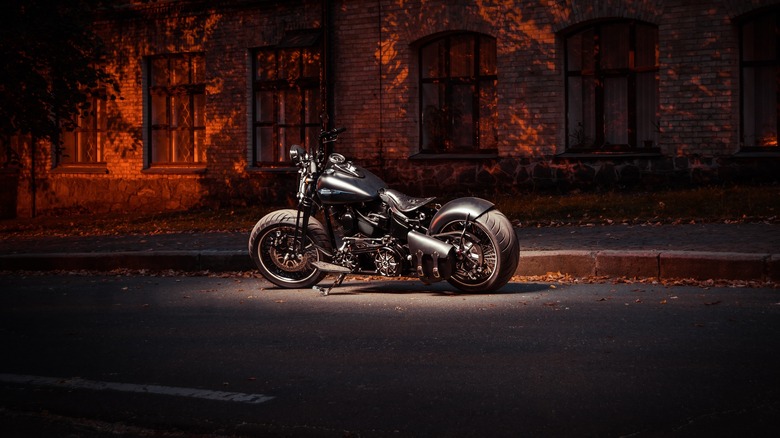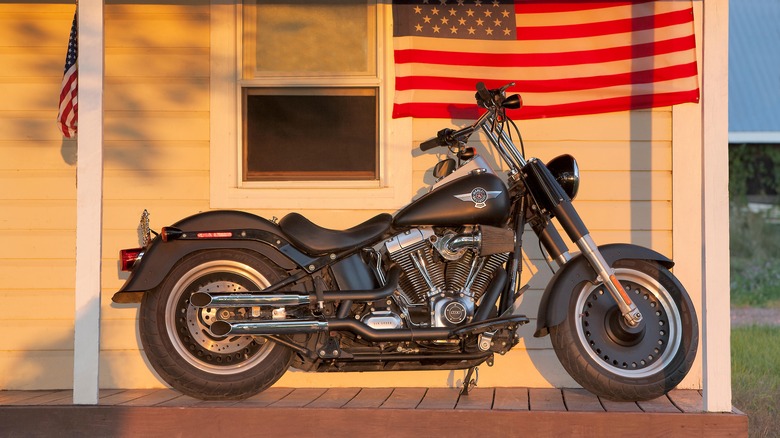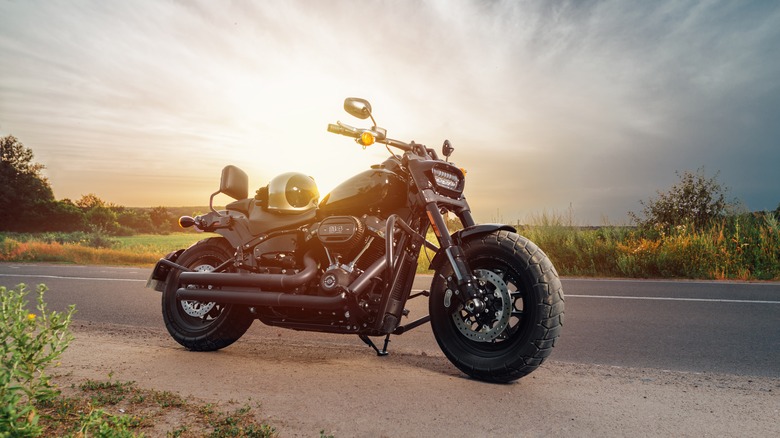Harley-Davidson Fat Boy Vs. Fat Bob: What's The Difference?
There may be no other motorcycle as famous as Harley-Davidson's Fat Boy. Not only does it have a name that just sticks with you, but it also found itself on the market in 1990, just in time to have a memorable role in James Cameron's 1991 blockbuster "Terminator 2: Judgement Day." That wouldn't be the bike's only foray in Hollywood either because in 2007, John Travolta's character found himself on top of a 2006 Screamin' Eagle Fat Boy for "Wild Hogs." Had the movie been made only a year or two later, Travolta might have found himself on a 2008 Fat Bob instead.
Harley-Davidson's 2024 Fat Boy 114 and 2023 Fat Bob 114 might have similar names, and even a few similar specs, but they're not identical by any means. Much like the Fat Boy and Street Bob, they're both different bikes intended for different riders. The two bikes sharing the same Milwaukee-Eight 114 engine, hence the name, is about the extent of where they're identical. Even the amount of torque each motorcycle gets out of the engine is different with the Fat Boy producing 119 lb-ft at 3,000 rpm while the Fat Bob pushes out 118 lb-ft at 3,500 rpm.
Anyone looking to get themselves a new Harley-Davidson and is interested in either of these two bikes will have to know what they want the motorcycle for.
The Fat Boy is a cruiser
On paper, the two bikes aren't too different from one another. A couple inches difference here and there in their dimensions, but the difference in style couldn't be more apparent when looking at them. The Fat Boy 114, as the name suggests, is a big bike. Where else does a larger motorcycle belong other than the road? The open road, to be exact.
Some might find the Fat Boy 114 comfortable for city cruising, but anyone who puts larger tires on their Fat Boy will feel more comfortable on the interstate due to cornering being more difficult with them. The Fat Boy and Fat Bob both get 47 miles to the gallon, but the Fat Boy's five-gallon fuel tank is meant for somebody who wants to put some serious miles behind them.
The Fat Boy 114 is a bike you want if you're looking for that classic Harley-Davidson look. It has many notable upgrades that make it a modern motorcycle for the modern person, such as a digital odometer and fuel level, but its analog speedometer gives the rider a nice classic feel. The Fat boy comes in with a slightly higher price tag than its Fat Bob cousin, with an MSRP of $21,999 for the base model. Anything extra will naturally hike up the price.
The Fat Bob is a versatile machine
While the 2024 Street Bob 114 is perfect for maneuvering through city streets, the Fat Bob has no problem with longer distances. Sure, it might only hold 3.5 gallons of fuel and be more compact than the Fat Boy, but according to Forbes, the seat is very comfortable, which is crucial for the long haul.
Despite weighing 675 pounds when loaded with fuel, it's a pretty easy bike to maneuver, benefitting city riders who have to frequently lean into corners. There's no need to lean nearly as far with the Fat Bob for turns, as a 31 and 32 degree lean to the right and left, respectively, will suffice. Comparatively, the Fat Boy requires a 25.6 degree lean for both directions.
Unlike the Fat Boy, the Bob comes with a digital speedometer as well as a digital odometer, fuel gauge, clock, and trip and range indicator. The only analog gauge is the tachometer. There are foot pegs with enough space for a rear passenger, but if the additional rider is anyone larger than a child then both the driver and passenger will be riding uncomfortably until they're able to stretch their legs. Unless you want add-ons and a different paint scheme, the sticker price for the base model of the Fat Bob is $18,899.


